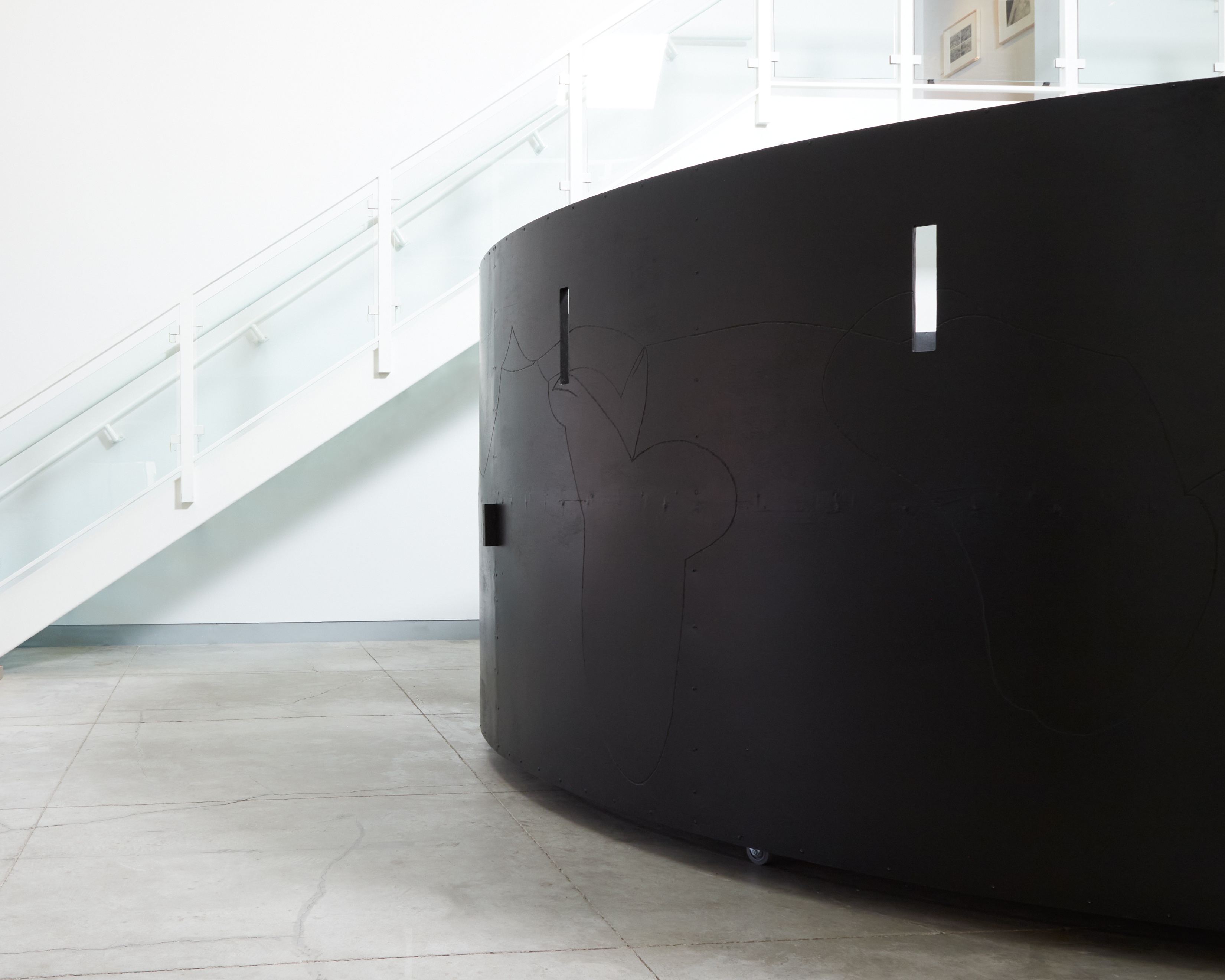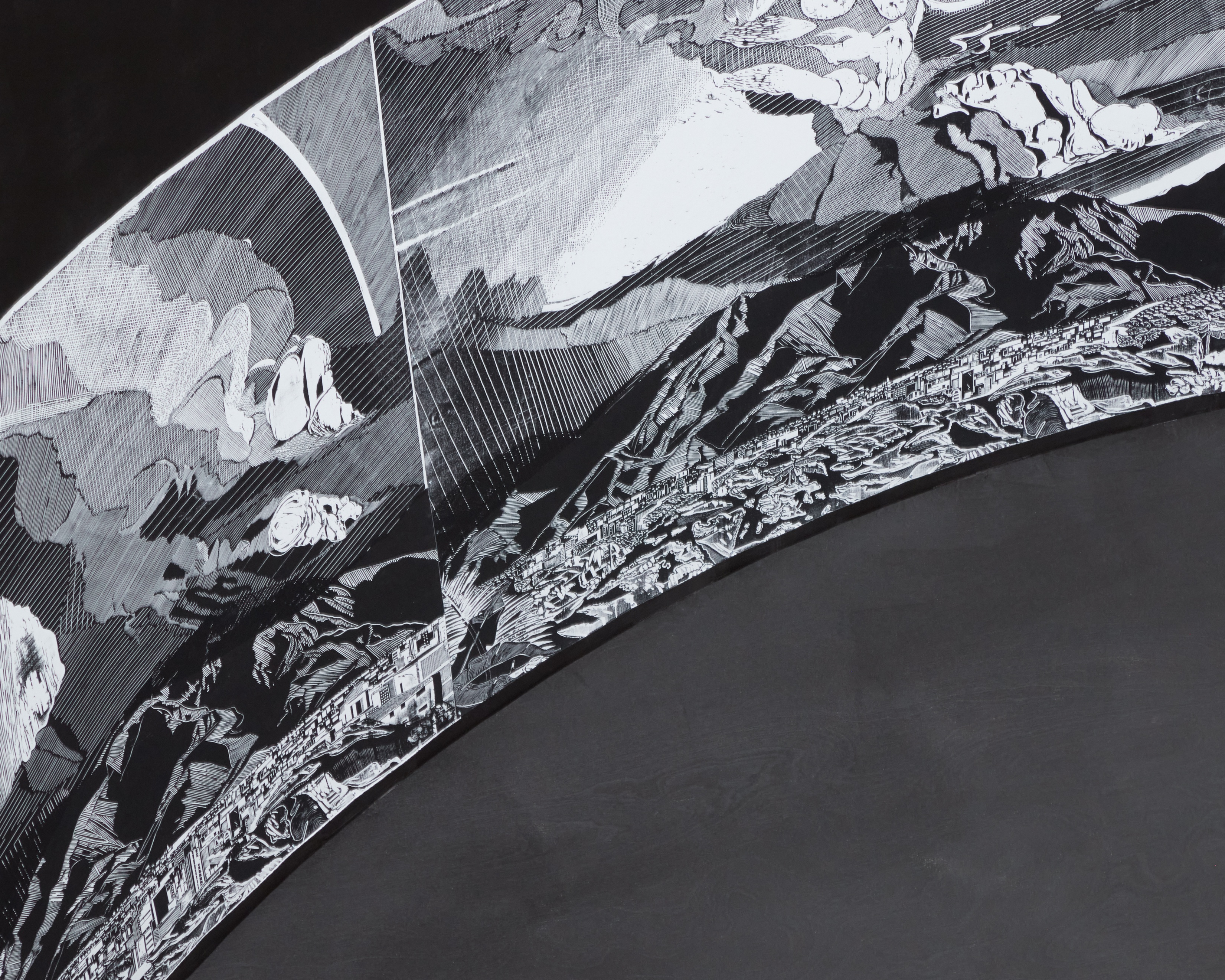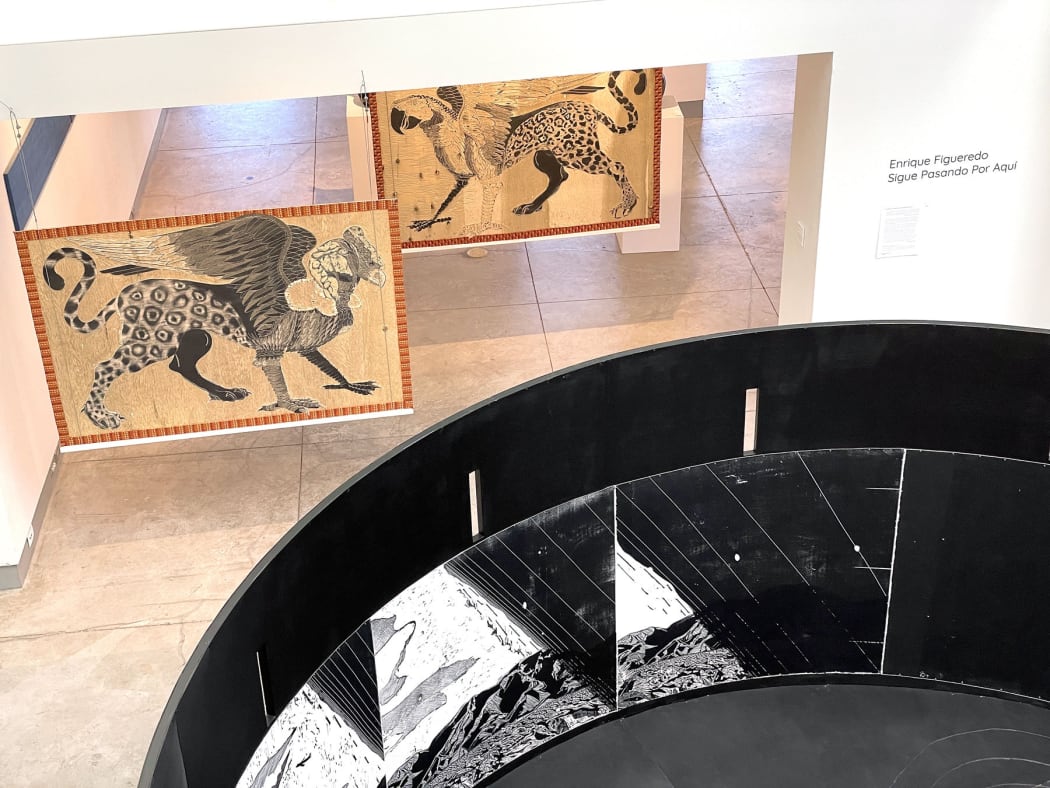
Read statements from Enrique Figueredo and Gallery Director Jordan Eddy about Figueredo's solo show Sigue Pasando Por Aquí , and explore the exhibition guide for more information.
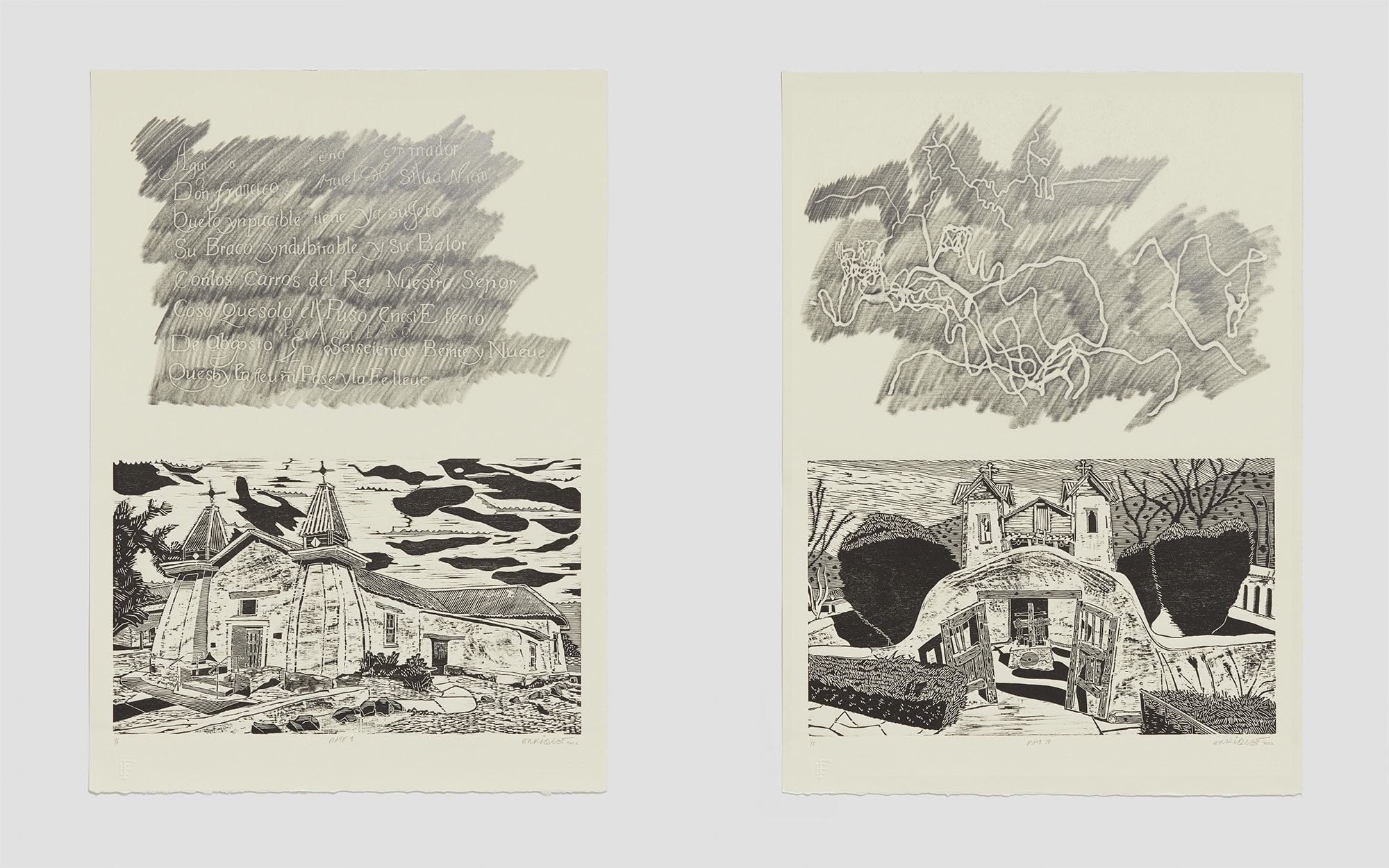
Enrique Figueredo, Plates 9 & 10 from Pasó Por Aqui series, woodcut and graphite rubbings, 26 x 19 in each.
DIRECTOR'S NOTE
The enmeshed timeline of Enrique Figueredo’s Sigue Pasando Por Aquí stretches from Europe’s Middle Ages to present-day Venezuela and New Mexico. I recommend starting somewhere in the middle. Resist the gravitational pull of Figueredo’s zoetrope and proceed to our second-floor catwalk, where the artist pairs detailed woodcuts of New Mexico’s mission churches with rubbings of Spanish colonial graffiti and bark beetle-infested trees.
Here, two histories of the Southwest—of human conquest and insect migration—are linked by a conceptual skew line. These narratives of invasion and destruction seem analogous until you consider the beetles’ status as climate refugees driven from Central America to the United States. The insects are thus victims of the long tail of colonialism, even as they echo colonial narratives by ravaging native forests and dominating local insect populations.
Figueredo uses the layered language of printmaking to map the fractured edges of cultural and political paradigms. It’s a surprisingly hopeful zone for artistic expression, linking the Venezuelan-American artist with the legacy of Latin American protest art, of which printmaking is a cornerstone. Through kinetic and iterative action, Figueredo challenges viewers to consider the cyclical nature of human history that alternately sparks and subverts revolution.
I also think of Figueredo’s artwork in relation to Latin American writers such as Isabel Allende and Gabriel García Márquez, who fold fantastical elements into real-world narratives to reveal humanity’s beauty, darkness and absurdity. As you explore the show, consider this quote by their literary forebear Jorge Luis Borges from his short story “El jardín de senderos que se bifurcan” (“The garden of forking paths”): “No one realized that the book and the labyrinth were one and the same.”
-Jordan Eddy, Director
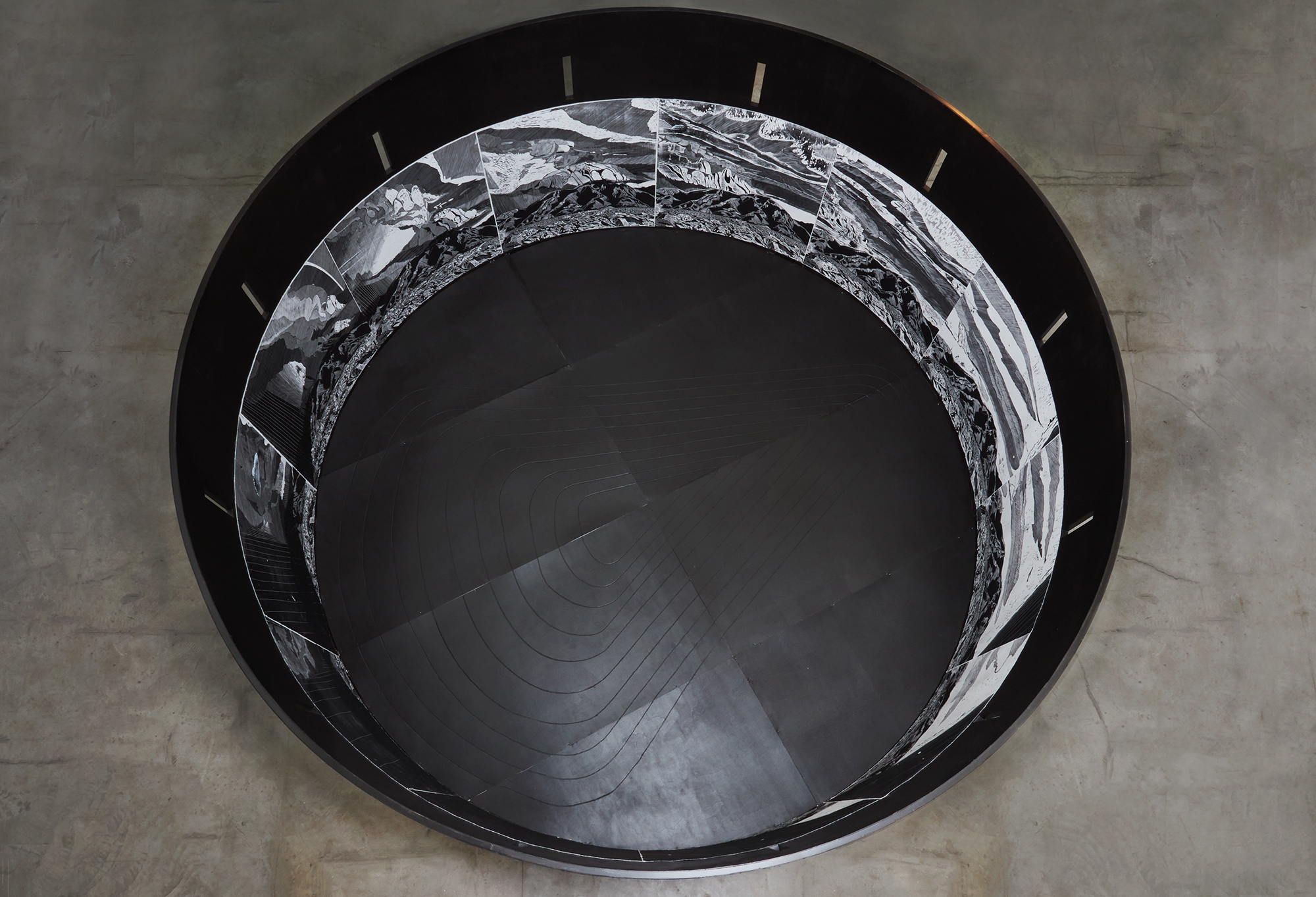
Enrique Figueredo, VIAJES DE LA GRAN FLOTA BLANCA (VOYAGES OF THE GREAT WHITE FLEET) 1899-, 2023, carved plywood, wood, aluminum, steel, casters, house paint, woodblock prints, and screen print, 6 x 15 ft.
ON THE ZOETROPE
This is the second version of Enrique Figueredo’s Viajes de la Gran Flota Blanca. The work’s first iteration was part of the artist’s 2019 MFA thesis exhibition at Mason Gross School of the Arts (which is part of Rutgers University). In that display, the zoetrope appeared next to a black-and-white intaglio referencing a colonial Caribbean travel book advertisement that Figueredo reimagined using contemporary symbolism. As you absorb the zoetrope’s overwhelming presence in our atrium, consider its revised context—from New Jersey to New Mexico, and positioned among recent artworks that blend disparate places and time periods.
-Jordan Eddy, Director
Explore the Exhibition Guide.
